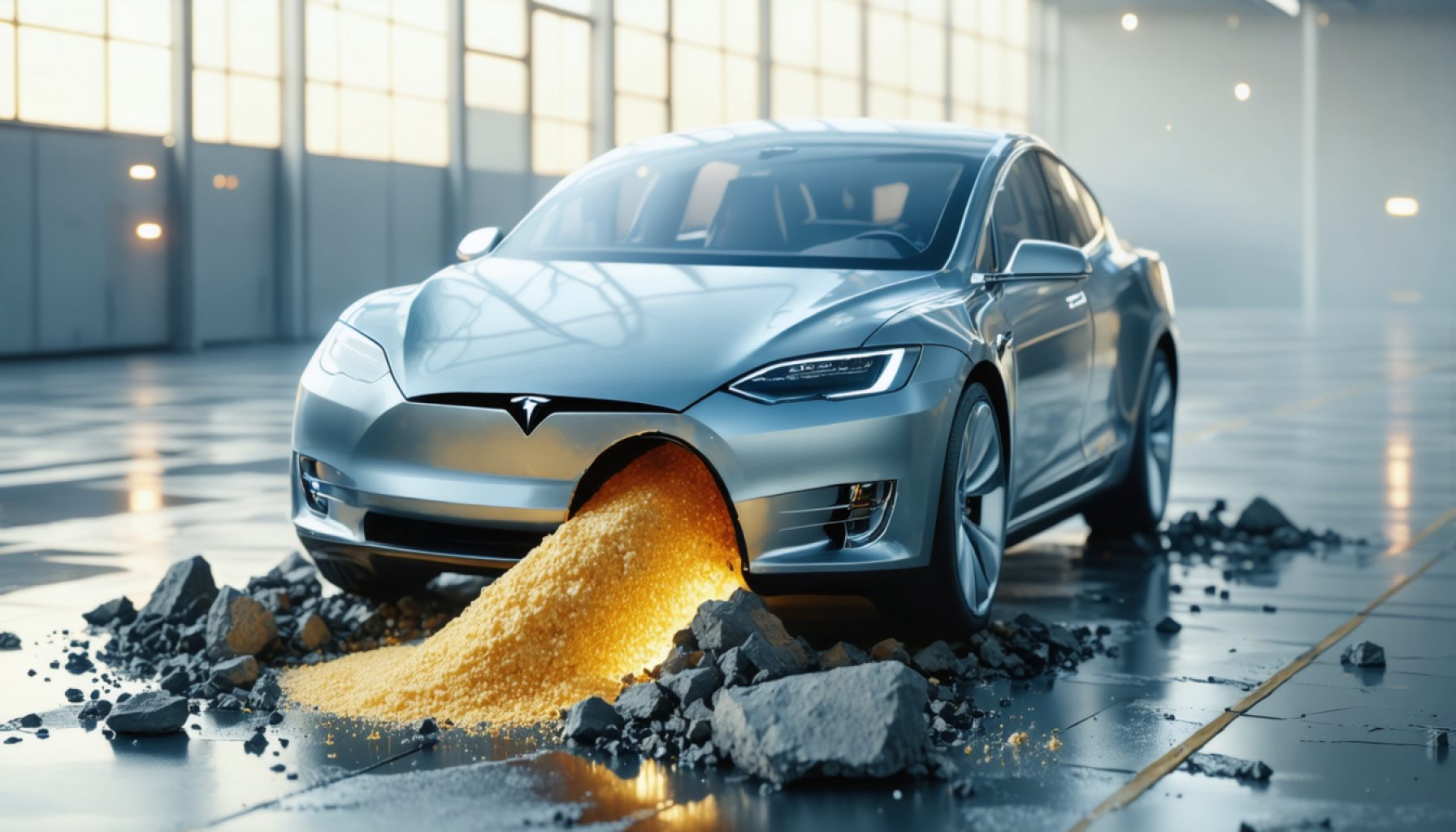- Iron-sodium batteries are emerging as a formidable contender to traditional lithium-ion technology, promising a shift in energy storage efficiency and cost-effectiveness.
- Inlyte, in collaboration with HORIEN Salt Battery Solutions, is developing these batteries with high stability and 90% roundtrip efficiency, targeting mid to long-duration storage.
- The iron-sodium batteries boast a lifespan of over 7,000 cycles, equating to 20 years of service, appealing to industries seeking reliable and economical energy solutions.
- Inlyte’s expansion strategy includes acquiring Beta Research and establishing a 30,000-square-foot facility to advance sodium metal halide technology.
- Tesla’s Megapack continues to impact global energy storage markets, notably with shipments from China’s Shanghai Megafactory, enhancing grid stability and supporting renewable integration.
- The evolving energy storage landscape presents opportunities to redefine industry standards and challenge existing giants as innovative solutions continue to emerge.
A quiet revolution is brewing in the world of energy storage, where longstanding lithium-ion dominance faces a formidable contender. Picture an iron-sodium battery emerging from a stealthy startup, poised to redefine what we know about powering our future. While Tesla’s Megapack has become synonymous with energy storage, this fresh contender promises a seismic shift in how energy is captured and conserved.
Imagine the dense hum of production at Inlyte’s prospective US factory, a facility yet to reveal its true location but already brimming with promise. The startup, armed with an audacious vision, is harnessing the stability and efficiency of iron-sodium chemistry. Their collaboration with HORIEN Salt Battery Solutions is akin to gathering a team of alchemists, fixated on crafting a battery capable of mid to long-duration storage that far surpasses traditional measures. It’s not just about endurance but an embodiment of affordable efficiency, thanks to a 90% roundtrip efficiency that propels these batteries to new frontiers.
Envision batteries cycling smoothly over 7,000 times, translating to two decades of service. This performance is a siren call for industries seeking cost-effective solutions in a landscape where energy resilience is more critical than ever. The race for scalability led Inlyte to acquire Beta Research, a pivotal development from the UK that laid the groundwork for sodium metal halide technology. With facilities sprawling over 30,000 square feet, the harmony of innovation and practical deployment seems not just probable but inevitable.
Meanwhile, Tesla’s Megapack sails the seas, marking its presence in China’s burgeoning energy market. As monumental Megapacks depart from the Shanghai Megafactory, Tesla reinforces its dual identity—an automotive titan and an energy visionary. Their storage behemoths, replete with technology akin to their celebrated vehicles, underscore Tesla’s sustained impact across global grids. The first Megapacks landed in Shanghai herald a new era of grid stability, a step toward diminishing outages and bolstering renewable integration.
As the narrative unfolds, the heart of energy storage innovation beats louder. Are these iron-sodium marvels the harbinger of a new epoch, or are they merely characters in the odyssey of technological evolution? As the battery wars intensify, one truth remains: the quest for the ultimate storage solution will propel energy dynamics into an uncharted domain. What stands at the crossroads is the potential to redefine a sector, an opportunity to challenge giants, and perhaps, to change the world.
This New Battery Technology Could Revolutionize Energy Storage
The world of energy storage is on the brink of a transformation. Let’s delve deeper into the exciting promise of iron-sodium batteries, a burgeoning technology that could challenge the supremacy of lithium-ion systems such as Tesla’s Megapack.
The Iron-Sodium Battery Revolution
While traditional lithium-ion batteries have dominated the energy storage market, primarily due to their high energy density and efficiency, new contenders like the iron-sodium battery are reshaping the landscape. According to Forbes, iron-sodium technology offers unique benefits:
– Cost-Effectiveness: Unlike lithium, iron and sodium are more abundant and cheaper, making these batteries potentially more economical.
– Safety and Stability: Iron-sodium batteries are known for their stability and lower risk of overheating, addressing a significant concern with lithium-ion systems.
How Iron-Sodium Batteries Work
1. Composition and Chemistry: These batteries use a combination of iron, sodium, and other components to store energy.
2. Energy Cycle Efficiency: With a reported roundtrip efficiency of 90%, these batteries can store and release energy efficiently.
3. Longevity: Capable of more than 7,000 charge cycles, they promise up to 20 years of operational life.
Advantages and Use Cases
– Grid Stability: Their ability to provide mid to long-duration energy storage makes them ideal for stabilizing grids with fluctuating renewable energy sources.
– Industrial Use: Industries can benefit from reduced energy storage costs and enhanced reliability.
– Scalability: Inlyte’s acquisition of Beta Research highlights focus on scalable production, a critical factor in widespread adoption.
Tesla Megapack vs. Iron-Sodium Batteries
– Comparison:
– Megapack: Offers high capacity and integrates seamlessly with Tesla’s grid solutions. It’s backed by a brand synonymous with innovation.
– Iron-Sodium: Although newer, they offer potential advantages in terms of cost and raw material availability.
Future Market Trends
According to Bloomberg, the race to dominate the energy storage market will likely involve diversification. Iron-sodium batteries could gain significant traction in areas where cost and resource availability play critical roles.
Challenges and Controversies
While promising, iron-sodium battery technology faces hurdles:
– R&D Investment: Substantial funding is needed to advance from prototype to market-ready stages.
– Acceptance: Breaking into a market dominated by established lithium-ion technology requires overcoming skepticism.
Actionable Recommendations
For those in the energy sector:
– Explore Partnerships: Collaborate with startups like Inlyte to integrate emerging technologies.
– Invest in Research: Allocate resources to explore the potential of iron-sodium batteries within your operations.
Final Thoughts
Iron-sodium batteries hold the key to potentially redefining energy storage, offering a sustainable alternative to current technologies. Their evolution could stimulate competition, driving innovation across the industry. As the sector anticipates these changes, remaining adaptive and informed will be crucial for staying ahead.
For more insights on energy innovations, visit Bloomberg or Forbes.
